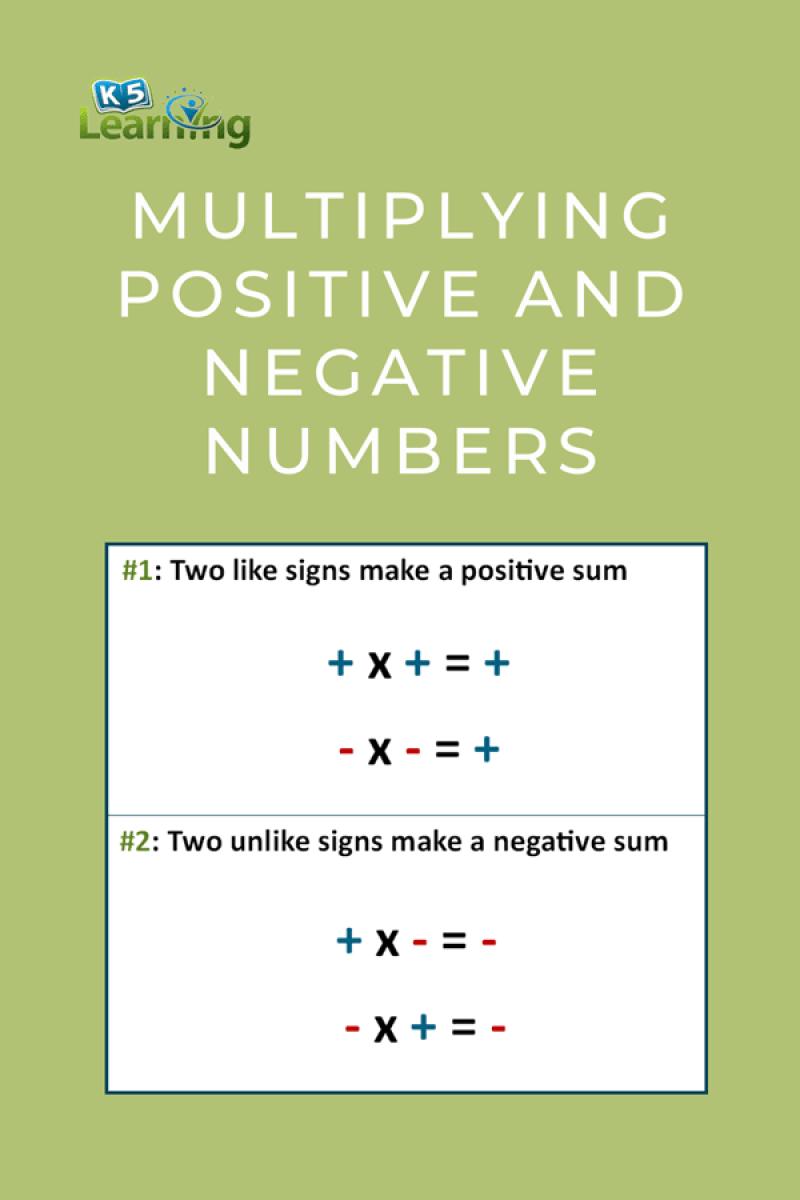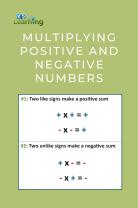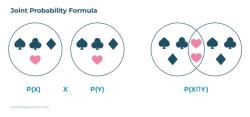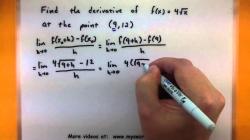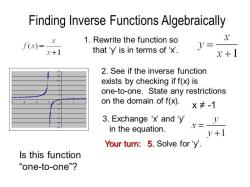Why does multiplying two negative numbers make a positive number?
The rule that states "multiplying two negative numbers results in a positive number" is a mathematical principle that arises from the properties of arithmetic and algebra. There are various ways to explain and understand why this rule holds. One common approach involves considering the concept of opposite directions and magnitudes. Let's explore this explanation:
Opposite Directions:When you multiply two numbers, you are essentially finding the product of their magnitudes and determining the sign based on their directions. Consider two negative numbers, say and , where and are positive.
- Multiplying the magnitudes gives .
- Since the numbers are negative, you introduce a negative sign for one of them, resulting in .
Therefore, multiplying two negative numbers is equivalent to multiplying their positive magnitudes and introducing a negative sign due to their original direction.
Number Line Representation:Visualizing the number line can provide additional insight. If you think of moving to the right as positive and to the left as negative, multiplying by a negative number can be viewed as a reflection or reversal of direction.
- can be thought of as moving steps to the left and then moving another steps to the left. The combined effect is a movement to the right by steps.
- The result, , is positive because you end up on the positive side of the number line.
Consistency with Rules:This rule maintains consistency with other arithmetic rules. For example, when you multiply a positive and a negative number, the result is negative. Extending this logic, multiplying two negative numbers results in a positive product.
In summary, the rule that multiplying two negative numbers produces a positive result is a consequence of the way multiplication interacts with the concept of direction and magnitude. It is a fundamental property of arithmetic that helps maintain mathematical consistency and coherence.
Here's a comprehensive explanation of negative number multiplication:
1. Why Two Negatives Make a Positive:
Directionality: Negative numbers represent movement "away from zero" on the number line, while positives go "toward zero."
- Multiplying by a positive means "continuing in the same direction." (-2 x 3 = -6, moving further away from zero).
- Multiplying by a negative signals "turning around and going back." (-2 x -3 = 6, turning around twice, ending up closer to zero).
2. Mathematical Explanation:
- Sign Rule: Positive times positive or negative times negative equals positive. Negative times positive or positive times negative equals negative.
- Double Counting: Multiplying is equivalent to repeated addition. (-2 x -3) = (-2) + (-2) + (-2) = 6.
3. Real-World Examples:
- Debt: Owing $2 (-2) and having $3 (-3) of debt forgiven means you owe $1 less (6).
- Elevation: A submarine 200 meters below sea level (-200) ascends 30 meters (-30), ending up 170 meters below sea level (positive change).
4. Application in Algebra:
- Solving equations: Understanding negative multiplication is crucial for solving algebraic expressions and equations with negative coefficients.
- Factoring: Factoring polynomials often involves manipulating negative signs and applying the rules of negative multiplication.
- Graphing functions: Graphing functions like y = -x^2 requires understanding how negative signs affect the shape of the graph.
5. Alternative Conceptualizations:
- Number Line: Visualize movement on a number line: two steps back (-2), followed by three steps back (-3), result in three steps forward (6).
- Debt Analogy: Think of negatives as "debts." Owing $2 and then having $3 of debt forgiven (two negatives) reduces debt by $5 (positive).
Key Points:
- Multiplying two negatives results in a positive due to the "turnaround" effect of negative signs.
- It's explained mathematically by the sign rule and double counting.
- Real-world examples and visual representations can aid understanding.
- It's essential for algebraic operations and solving equations.
- Alternative conceptualizations can provide different perspectives on the concept.
